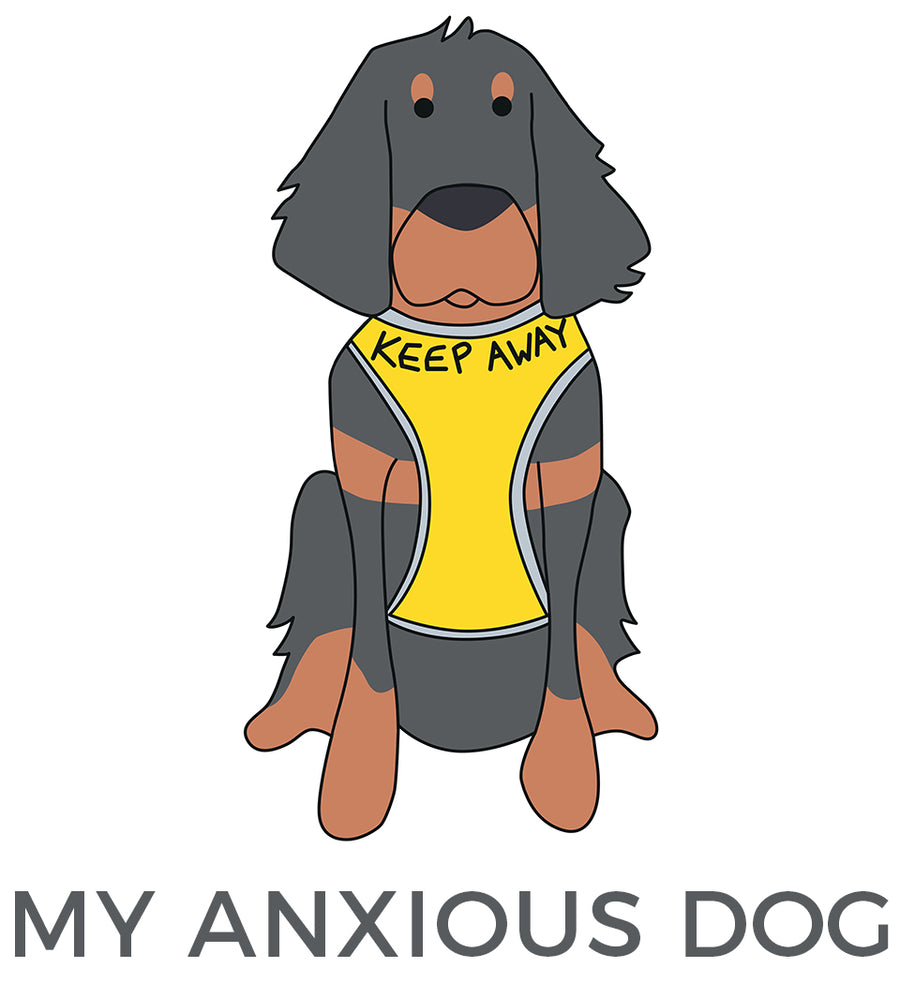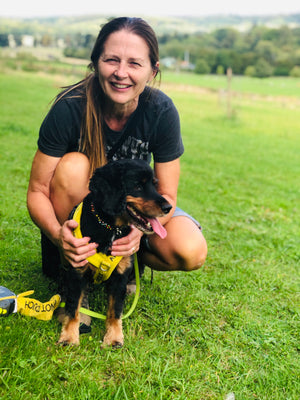The term ‘reactive dog’ describes the type of behaviour a dog does particularly when on lead. Reactive dogs display levels of fear, frustration or aggression when feeling anxious or afraid. A “reactive dog” is one that is constantly responding to external stimuli when out walking, such as the presence of other dogs, passing cars, cyclists, strangers. Just like humans, dogs develop psychological responses to trauma that stick with them for a long time, unless someone is willing to try and help them fix it.
I have had dogs all my life and got a beautiful puppy in 2012, a Cocker Spaniel called Bella . I was so proud to take her to the vets for puppy socialisation class but she wasn't very interested, she mainly sat under my chair while a beagle pup caused havoc. She was brilliant at being trained and in our puppy class we even won the award for "Best dog in class". However as we progressed in our class I noticed Bella completely fixating on me, hardly looking around the hall and if we were sat next to a dog that was playful or had no manners Bella would tell them off. "Serves you right" the owners would say "You need to be put in you place." Never once did the instructors say to me that Bella was anxious. I didn't know, I only had 2 other dogs in the past which were opposites to Bella, confident and pleased to be around everyone. However as we progressed in the levels of class Bella struggled with the "Stay" when I walked out of the room from her. Was this another sign I should have picked up on?
Could I have done things differently if I understood my puppy's personality?
We tried flyball in the summer of 2013, I saw an advert for lesson to learn the basics of flyball. It sounded fun and she was good, a great way to increase our bonding. Unfortunately Bella was attacked, a dog came flying from across the park and took Bella off her feet from the side. It sounded horrendous and this was the start of her becoming fearful to other dogs. I didn't know this at the time but looking back should I have done something different? Could I have helped her? From this her fear of being touched started. Looking back I think she was possibly bruised and when she was touched it was tender and sore. This was the start of her fear of people touching her.

Next, Bella started growling at people
I phoned my dog trainer that I had done all my classes with when she first started growling at people, I was in tears I felt awful. She told me about using a yellow ribbon on her lead as it meant that she needed space, but I found people didn't know what this meant, so dogs still came bounding over and upsetting her. So I decided to develop and test my own range of yellow products and created a range of high quality leads and padded harnesses. I wanted a product that would suit Bella's needs and help other dog owners the understand her.
When Bella wore the My Anxious Dog products, things started to change.
Finally, people were starting to recognise she needed space, the KEEP AWAY on the yellow helped get the message over. I found it such a massive help and it made me feel so much calmer when out in public too.
I did go through a stage of embarrassment, it felt like having a naughty child at school! But I don't think I really understood my dog. I didn't understand it was from fear.
Seeing her confidence grow made me smile
In time, Bella was able to enjoy classes again
I was lucky that a few years ago I found an agility group that welcomed anxious dogs in their classes. They were small classes which were great and we always had the end chair. Our teacher was fantastic, she also had a reactive dog so we settled in well and really enjoyed it. I think Bella did too as long as she had the space. It really helped finding a group with other dog owners with anxious dogs as I didn't feel like the odd one out. I didn't feel like I was being judged. We even went on to do scent work and group walks which gave Bella confidence around the dogs she met every week.

Now more people are aware of My Anxious Dog and what wearing yellow means.
It takes time and effort but I have raised awareness in my area, asking for permission to put poo bin stickers on the bins in parks. By giving posters to all our local vets to display in the waiting rooms. By having several videos produced of dogs talking about why they wear yellow. All these videos, poo bin stickers, wheelie bin stickers, car stickers and posters I have designed so owners of reactive dogs can also raise awareness in their own areas too.
So how do we recognise that our dog is born with an anxious personality?
Expert advice from dog trainer and rescue dog expert Suzanne Gould
Avoidance behaviour.
When faced with an unwelcome situation, dogs may avoid it by focusing on something else. Instead of looking at or interacting with the situation which could be a person or dog they may go and sniff the ground, lick their genitals, or simply turn away
Pacing or shaking. You’ve seen your dog shake off after a bath which is normal, but shaking out of context is a sign of stress. For example, dogs are commonly stressed out when visiting the Vet, some dogs “shake it off” when they’ve finished and feel safe.
Dogs, like people, also pace when agitated. For example if you leave your dog in a room to go to another then you might see them pacing back and forth around the room, worried about where you’ve gone. When pacing a dog will commonly follow the same path or route around a room too
Whining or barking. This is normal dog self-expression, but when your dog is anxious then it may become intensified. Dogs that are afraid or tense may whine or bark to get your attention, or to self soothe.
Yawning, drooling and licking.
Dogs yawn when they are tired or bored but they also yawn when stressed. A stressful yawn is more prolonged and intense than a sleepy yawn. Dogs may also drool and lip lick excessively when anxious.
Hiding or Escaping. An extension of avoidance, some anxious dogs literally move behind their owners to hide. They may even nudge their owners to prompt them to move along. As a means of escape, they may engage in diversion activities such as digging or circling, or may slink behind a tree or parked car. They could even run away from what is making them anxious.
If you notice any new or odd behaviour's from your dog then your first point of call should be with your Vet. Your Vet can rule out any health/illnesses concerns that may be the cause of your dogs behaviour after that seek out help from a Rewards Based Dog Trainer or Behaviourist
Get your dog sniffing by scattering treats in grass or using something like a snuffle mat indoors. The act of sniffing and getting your dogs sense working is really relaxing for dogs, it will instantly bring their stress levels down.
Praise them for being confident even if they only mange to look at their fear and praise them for remaining calm too. You can’t re-enforce fear in a dog when you offer them your support.
Remember time and patience are you and your dogs friend when it come to over coming or managing anxiety. There is no such thing a quick fix, in some cases managing your dogs anxiety can be a life long commitment.
To find out more about Suzanne you can visit her website, and she also has a book on how to support your rescue dog see more about Suzanne here
Thankfully, there is more awareness of anxiety in dogs now, and wearing yellow is a way of warning other owners your dog needs space.
To see the full range of My Anxious Dog yellow space awareness products that Bella inspired, please click here
This is my journey so far with an anxious dog.
Thank you


